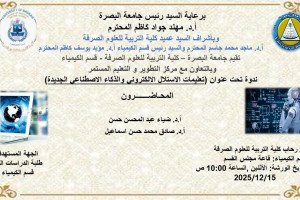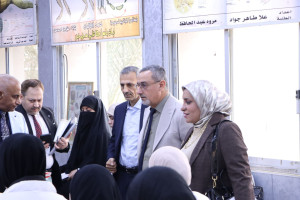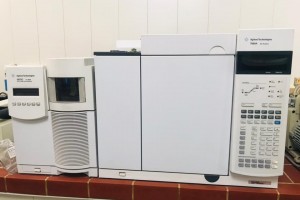
The College of Education for Pure Sciences in the Department of Chemistry discussed a master’s thesis on the preparation, diagnosis and study of the antibacterial activity of some azo ligands and their complexes of nickel and copper.
The message submitted by the researcher (Jamal Jassim Muhammad) included:
The direct method was used to prepare azo compounds. Complexes were also prepared by using nickel and copper metals with the prepared ligands.
The azo diketone compounds were prepared in two steps, the first of which included the process of preparing the diazonium salt (nizot). The second step was the duplication process to obtain the required azo compounds.
The goal of the message
Preparation and identification of azo ligands K1 and K2 from the reaction of sulfadiazine once with acetyl acetone and again with dibenzoylmethane.
Preparation of azo ligand K3 and its identification from the reaction of tyrosine with benzoylmethane, and preparation of copper and nickel complexes for the ligands K1, K2, and K3 and their identification.
Spectroscopically diagnosing their molecular structures using available spectroscopic methods.
And study the inhibitory effectiveness and biological effect of these compounds on some selected bacteria
And a study of some magnetic properties of the prepared complexes
The message was concluded
Preparation of new ligands used in the preparation of divalent copper and nickel complexes from ligands (k1, k2, k3).
The prepared azo compounds acted as dianthal ligands with both copper and nickel(II).
Through the results of various tests, the validity of the proposed compounds was proven, and it was found that the azo dyes are linked through the hydroxyl group of the ring and the nitrogen atom of the azo group far from the ring.
Through studying the flame atomic absorption and measuring the molar absorbance of the complexes, it was found that the ratio of the ligand to the metal is 1:2 and that the prepared complexes are non-electrolytes.
The study proved that the coordination number of all the prepared complexes is six and that they have an octahedral geometric shape and hybridization (SP3 d2).
The inhibitory results demonstrated the effectiveness of some of the prepared compounds against the two types of bacteria selected in the study.









